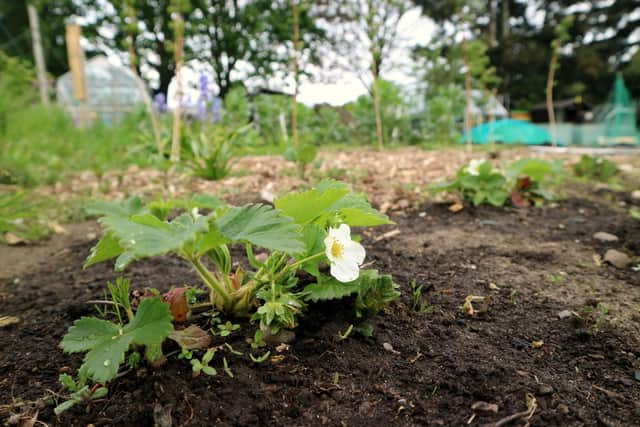“Allotments have served the country well”
and live on Freeview channel 276
I’m thinking about when we as children played away from our parents for hours in parks and areas like Roe Wood and raising thoughts about allotments.
Allotments of various sizes are well distributed throughout the city. All have brought happiness and hidden benefits (physical and mental), to many thousands of young and old gardeners. Allotments have served the country well, digging for Britain during the war whilst subsequently making many housewives gardening widows. Allotments of varying sized plots exist in many areas of Sheffield like the ones to be mentioned in districts 4, 5, 6 and 10.
Advertisement
Hide AdAdvertisement
Hide AdMany plots still stretch from Malin Bridge beyond the Rivelin Valley Road up to Hagg Hill where either side there are numerous plots, and on up Stephen Hill towards Crosspool.


Many of these allotments have been there before my time and certainly before the mass ownership of cars. The distances from the populated areas of nearby Walkley, Crookes, Crookesmoor and even Shalesmoor would have involved hours of just walking to and from plots each week. Families with many children (seven to 10 fairly common), would, I suspect, spend whole days on the plot during school holidays, requiring food, water and a duty of care. Cafes like the one that existed at the end cottage above the S bend on Rivelin Valley Road would have possibly served all corners of the sites. Nearby plots close to Crookes cemetery had the usual greenhouses and huts but also settees, chairs, washing stands, TV and ‘piped’ radio.
Closer to where I grew up, I have fond memories of Roe Lane allotments below Shirecliffe Road, next to Firth Brown sports fields (now SUFC), well before they made way for houses, an old people’s home and new bus route. But my memories are mainly about the seven ponds which were spread out between rows of gardens. The ponds teemed with wildlife including, in some cases, fish.
The whole area from Norwood to Pitsmoor was enjoyed by young and old and for some at least the biggest part of it still is today.
Advertisement
Hide AdAdvertisement
Hide AdToday, the views past Wincobank beyond the Rotherham border are clear on most days unlike before the clean air acts when even to the young the curtains of smoke from the Brightside industries were noticeably absent during the works fortnight shut-down.
An aerial view in the 50s/60s would have outlined Roe Wood, the Bluebell Wood, three blocks of allotments from Norwood Road to Shirecliffe Road, Little Roe Wood, LRW Nurseries, the rifle range and Firth Brown sports grounds (Atlas and Norfolk) next to the never forgotten seven ponds. Near the old rifle range on the hill top there is still evidence of the anti-aircraft gun site.
Roe Lane allotments probably had no mains water supply and thus pond life was regularly badly affected by the long hot summers during which only one or two relatively short storms occurred during the whole six-weeks school holidays.
Last, but not least, the Longley allotments which like many since about 1918 are positioned within new housing estates. Originally containing 76 plots, it is now down to about 60.
Advertisement
Hide AdAdvertisement
Hide AdIt is said that old-fashioned ways may have been better days. There were times when crops were few and times when too many weeds grew. There was faith and there was doubt, but the old ways eventually sorted things out. Us old-uns did it our way!
Comment Guidelines
National World encourages reader discussion on our stories. User feedback, insights and back-and-forth exchanges add a rich layer of context to reporting. Please review our Community Guidelines before commenting.